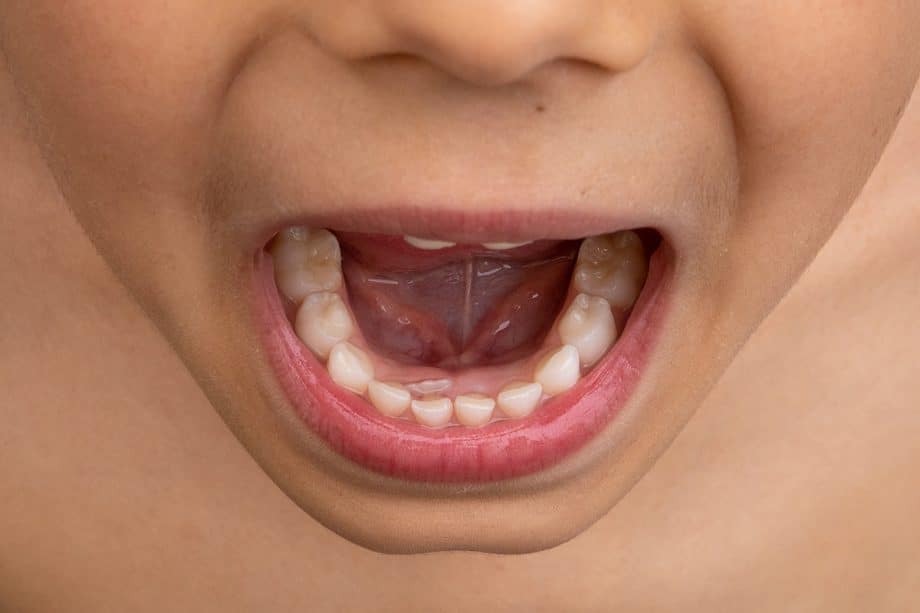Tooth eruption and shedding are natural processes that occur as children grow, leading to the transition from baby teeth (primary teeth) to permanent teeth. This process plays a crucial role in oral development, speech, and overall dental health. While every child’s timeline may vary slightly, understanding when teeth typically erupt and fall out can help parents prepare for each stage and address any concerns that arise along the way.
From the first baby tooth appearing around six months old to the final wisdom teeth emerging in late adolescence, each phase of tooth development is essential to a child’s dental health and alignment. Let’s explore the key stages of tooth eruption and shedding, what to expect, and how to support your child’s healthy smile.
Stages of Tooth Eruption in Children
The first set of teeth a child develops are known as primary teeth or baby teeth. These teeth begin forming before birth and typically start erupting between six months and one year of age.
Baby Teeth Eruption Timeline:
- 6 to 10 months – The first lower central incisors (bottom front teeth) emerge.
- 8 to 12 months – The upper central incisors appear.
- 9 to 13 months – The upper lateral incisors (teeth next to the front teeth) erupt.
- 10 to 16 months – The lower lateral incisors come in.
- 13 to 19 months – The first molars appear.
- 16 to 22 months – The canines (cuspids) emerge.
- 25 to 33 months – The second molars, the final set of baby teeth, come in.
Most children have a complete set of 20 primary teeth by the age of three. These teeth play a vital role in chewing, speaking, and guiding permanent teeth into place.
Why Do Baby Teeth Shed?
As children grow, their jaws expand to accommodate larger, permanent teeth. The roots of baby teeth gradually dissolve, allowing new teeth to emerge. This natural process is known as shedding or exfoliation.
Typical Shedding Timeline:
- 6 to 7 years – The lower and upper central incisors fall out first.
- 7 to 8 years – The lateral incisors are shed.
- 9 to 11 years – The first molars begin to shed.
- 10 to 12 years – The canines and second molars fall out.
By age 12 or 13, most children have lost all their baby teeth, making room for 32 permanent teeth, including the third molars (wisdom teeth), which may emerge in the late teens or early twenties.
Shedding occurs gradually, and loose teeth may take weeks or months to fall out naturally. If a baby tooth isn’t coming out as expected, it’s best to consult our dentists to determine if intervention is needed.
Common Issues with Tooth Eruption and Shedding
While tooth eruption and shedding typically follow a predictable timeline, some children may experience delays or complications that require dental attention.
Delayed Eruption
Some children’s permanent teeth take longer to appear, which can result from genetics, nutritional deficiencies, or oral health concerns. If a tooth does not erupt within six months of the expected timeline, a dental evaluation may be necessary.
Premature Tooth Loss
Losing baby teeth too early due to trauma, decay, or illness can lead to spacing issues for permanent teeth. In some cases, a space maintainer may be recommended to prevent shifting and misalignment.
Crowding and Alignment Problems
If a child’s jaw is too small to accommodate all permanent teeth, crowding or misalignment can occur. Early orthodontic evaluations help detect and address these concerns before they lead to more significant dental problems.
Monitoring tooth eruption and visiting a pediatric dentist regularly ensures any potential issues are identified and treated early.
Caring for Your Child’s Teeth During Eruption and Shedding
Proper oral care is essential throughout each stage of tooth development. Here are some tips to help maintain healthy teeth and gums during the eruption and shedding process:
- Start oral hygiene early – Even before the first tooth appears, gently clean the gums with a soft cloth. Once teeth erupt, use a soft-bristled toothbrush and fluoride toothpaste.
- Encourage good brushing habits. To prevent cavities, Teach children to brush twice a day and floss once a day.
- Manage teething discomfort – When new teeth are erupting, children may experience gum irritation. Using a cold teething ring or gentle gum massage can help soothe discomfort.
- Avoid sugary snacks and drinks – Limiting sugary foods and beverages helps reduce the risk of tooth decay and cavities.
- Schedule regular dental visits – Routine checkups help monitor tooth development and detect potential issues early.
By establishing healthy oral habits early, children can maintain strong, healthy teeth well into adulthood.
Frequently Asked Questions About Tooth Eruption and Shedding
What should I do if my child’s teeth are not falling out on time?
If your child’s baby teeth are not shedding within the expected age range, it’s best to visit a pediatric dentist. Sometimes, teeth may need a little extra time to loosen naturally. However, in cases where permanent teeth are erupting behind baby teeth (shark teeth) or if a baby tooth is stubbornly in place, a dentist may need to assist with extraction.
Is it normal for my child’s permanent teeth to look yellow?
Yes! Because of thicker dentin and natural enamel variations, permanent teeth often appear slightly more yellow than baby teeth. This is entirely normal, and as more permanent teeth emerge, the color difference becomes less noticeable. However, regular brushing and dental visits help maintain a bright and healthy smile.
At Dream Smiles, we specialize in comprehensive pediatric dental care, ensuring your child’s tooth eruption and shedding process is smooth and healthy. Our team provides expert guidance on early dental care, orthodontic concerns, and preventative treatments for growing smiles. Contact us today to schedule an appointment and keep your child’s smile on the right track.

